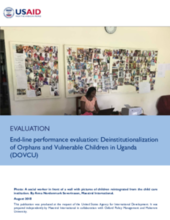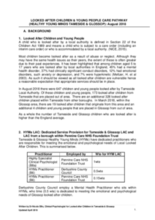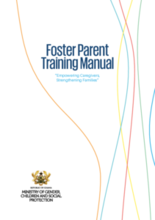Displaying 1151 - 1160 of 2214
This article analyzes secondary data collected from one of the most comprehensive longitudinal studies of foster youth.
The objective of this evaluation is to assess the performance of the “Deinstitutionalization of Orphans and Vulnerable Children Project in Uganda” (DOVCU) with regards to the creation of sustainable changes in the lives of two beneficiary groups, namely 43,000 vulnerable children living in targeted households and 2,000 children at risk as a result of an integrated package of support.
This paper reviews the Healthy Young Minds (HYMs) program for looked after children in Tameside & Glossop, UK.
This Manual provides the materials needed for Ghana's Department of Social Welfare and Foster Care Agency (where applicable) to conduct the following foster care related activities: Foster parent recruitment drives; Foster parent orientation sessions; and Foster parent training.
This report from the Social Market Foundation review the care system in the UK, including outcomes for children in care and the "silent crisis" in the care system.
The objective of this study was to assess item characteristics indicative of the severity of risk for commercial sexual exploitation among a high-risk population of child welfare system involved youth to inform the construction of a screening tool.
The objective of this study was to assess item characteristics indicative of the severity of risk for commercial sexual exploitation among a high-risk population of child welfare system involved youth to inform the construction of a screening tool.
The current study examined if the methods used to define and describe maltreatment contribute to the association between maltreatment and academic functioning in youth.
The main purpose of this paper is to explore non-kin foster carers' sense of parental competence and analyze its determinants and predictors in non-kin foster families.
This study aimed to compare the rates of psychiatric diagnoses and criminal convictions in young adulthood (ages 18–25 years) among children who were first placed at ages 2–6 years with those of children who were not placed and who had similar sociodemographic and family characteristics.




